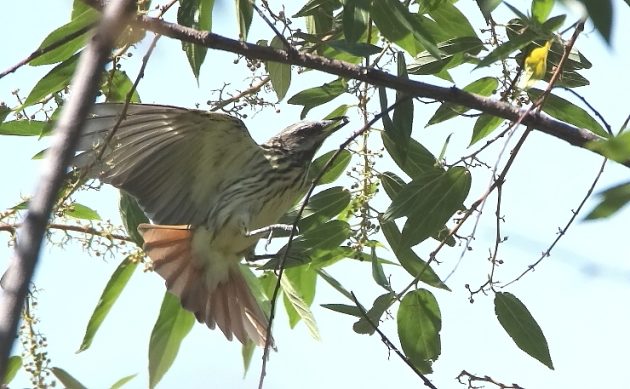[adinserter block=”1″]
Down right here on the southern finish of so many birds’ annual migrations, spring generally is a melancholy time. Between March and Could, we are saying goodbye to greater than half our duck and wooden warbler species, in addition to about half of all our shorebirds, vireos, hummingbirds, buntings, sparrows, and orioles, and lots of members of different avian households. A number of Empidonax flycatcher species additionally go away for the north… However I can’t get too unhappy about that.
And there may be some sweetness in these bittersweet months. For just a few, just a few, species truly winter in Central and South America, and summer time up right here in Mexico. They’re our summer time comfort prizes. Could-September is once I can hope to see the Sulphur-bellied Flycatcher, Yellow-green Vireo, Masked Tityra, and Cliff Swallow.
A pal in one other area just lately reported his first Sulphur-bellied Flycatcher of the season, so I made a decision to go over to the world round La Escalera, the place I generally see this lovely Tyrant Flycatcher. I didn’t, in reality, see any, so I’ll have to point out some older photographs of this species for context:
However the different summer-only species that’s particular to this web site did, in reality, flip up. These Masked Tityras solely flew shortly overhead, so the photographs proven under can also be from a earlier outing. However there was little question as to the calls I heard because the handed. The Merlin app describes it as “a moist quacking or farting sound”. (I’ll guess you didn’t count on to learn that phrase in a hen information.) Mexicans, at all times cautious to keep away from offense, extra politely identify this hen “puerquito“, suggesting that its name seems like a pig’s oink. Both manner, the decision is unmistakeable.
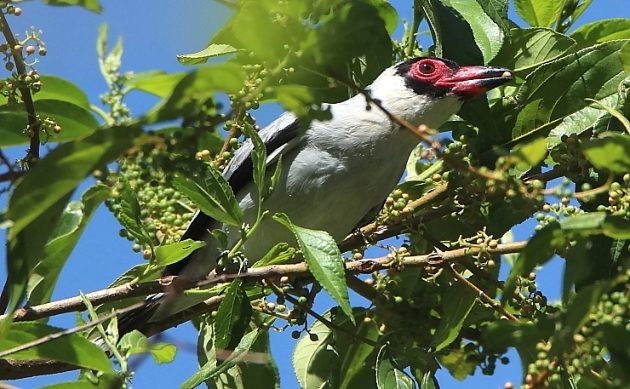
This little piggy…
There are just a few different species I at all times hope/count on to see close to the city of La Escalera. The street to El Palmar is my greatest place to see Lesser Roadrunners (barely smaller than the species that may be seen the American Southwest). And guess what?
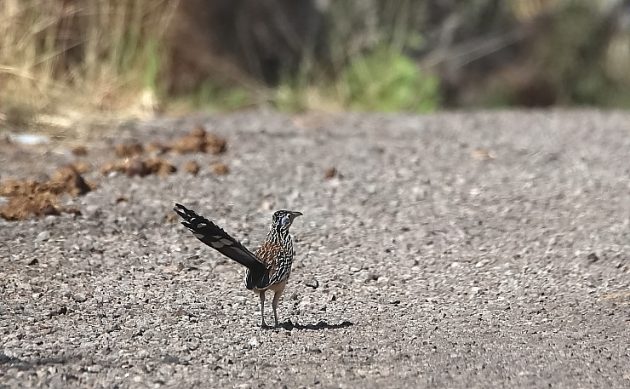
I did certainly see Lesser Roadrunners. They had been operating on roads.
My different route of selection, the unpaved street to the city of Arúmbaro, is the place I hope to see the Glowing-tailed Woodstar. However this time that beautiful hummingbird failed to seem. As a substitute, I noticed two different very particular hummers. In actual fact, I noticed them on the exact same perches the place I had hoped to see the Woodstar. The male Golden-crowned Emerald sports activities a protracted, deeply cleft tail, and this male was no exception. Sadly, it spent most of its time feeding in the midst of a flowering tree, and as soon as it lastly visited my facet of the identical, it stayed quietly perched, with its tail discreetly folded. Its colours confirmed properly, although. (Simply don’t ask me to defend the “golden-crowned moniker. Even eBird says its “crown will not be actually golden, extra of a golden-green”. It appears plain inexperienced to me.)
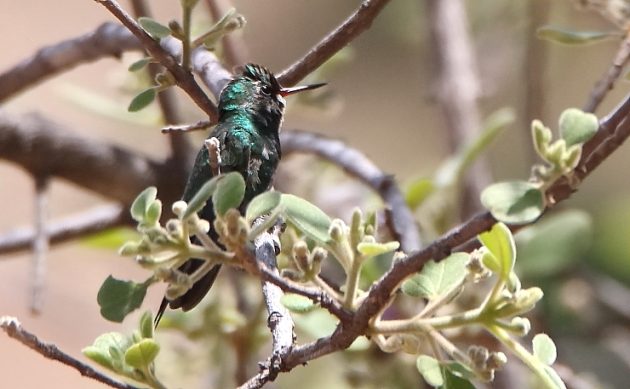
And, simply above the Golden-crowned Emerald, a Plain-capped Starthroat (don’t you’re keen on hummingbird names?!) additionally sat calmly. I don’t know what was stranger, to see two hummer species perching so shut to one another, or to see them doing so calmly. Hummers are usually very, very hyper birds. It have to be all that sugar they eat.
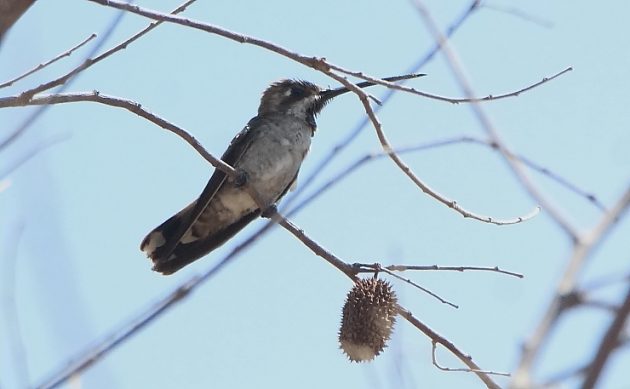
The Plain-capped Starthroat has the longest invoice of any of my native hummers — as much as twice the size of the top that helps it.
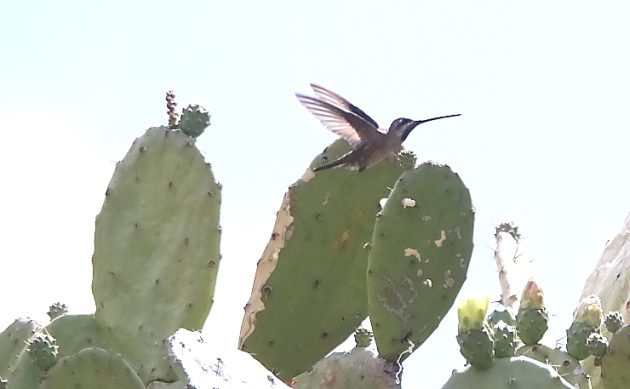
There have been, after all, many different pretties to be seen. It took fairly a little bit of glue to get this Orange-billed Nightingale-Thrush to pose so artfully.
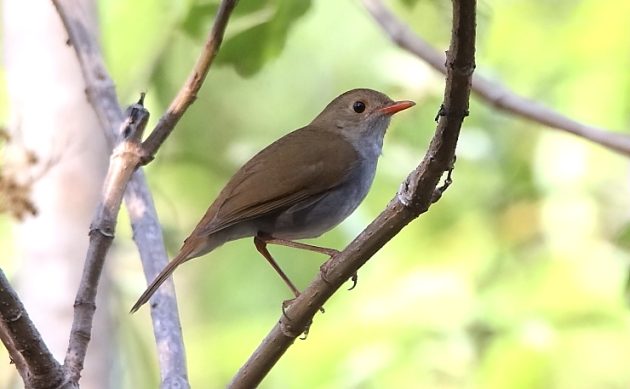
Simply kidding!
A number of Flame-colored Tanagers had been additionally round. These aren’t the very best photographs, however it’s uncommon for me to see multiple, a lot much less a male and a feminine collectively. So I’ll present them anyway.
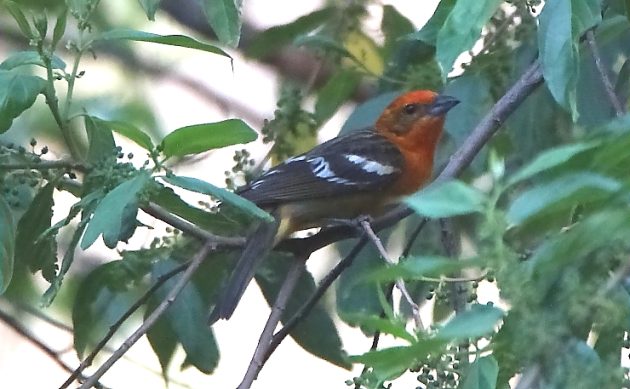
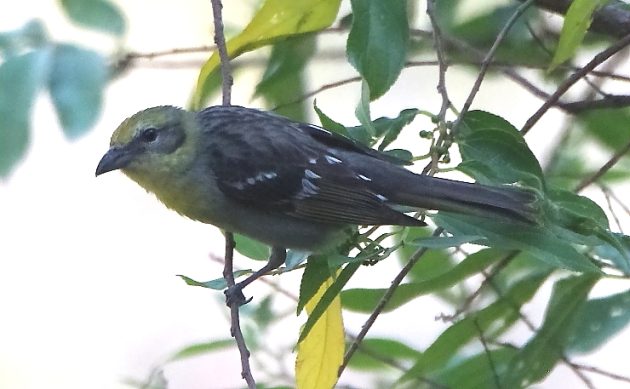
Care to guess which is which?
Northern Tough-winged Swallows are moderately drab creatures. Nevertheless it was a spotlight of my day to find how they nest.
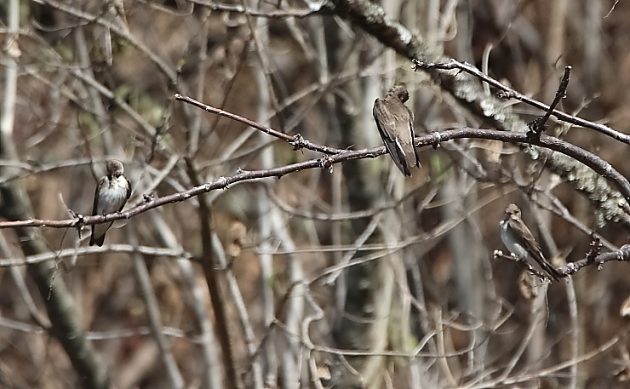
Right here they’re, simply chilling.
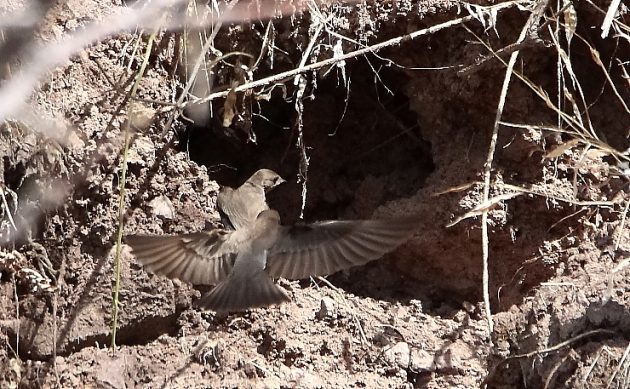
After which they head off to their nests! Which turn into dug into muddy cliffs. There have been a number of.
The Nutting’s Flycatcher can also be moderately drab, rather more muted than the above Sulphur-bellied Flycatcher. However this one actually was form to pose so properly.
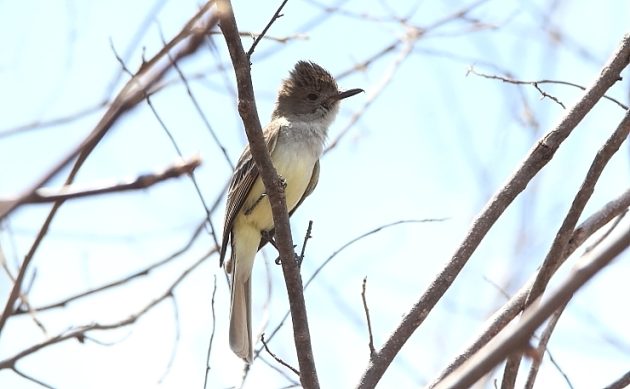
The reality is, that Sulphur-bellied Flycatcher wasn’t my solely purpose to go to La Escalera. Final yr I discovered no acorns wherever for my afforestation venture, besides on a row of oaks alongside the street to Arúmbaro. And people acorns produced 4 oak seedlings, now well-established after their first full yr. And though this yr appears to be a “mast” yr, when oaks throughout Michoacán will produce bumper crops of acorns, I needed to see if there could be extra acorns in Arúmbaro come June or July. And…
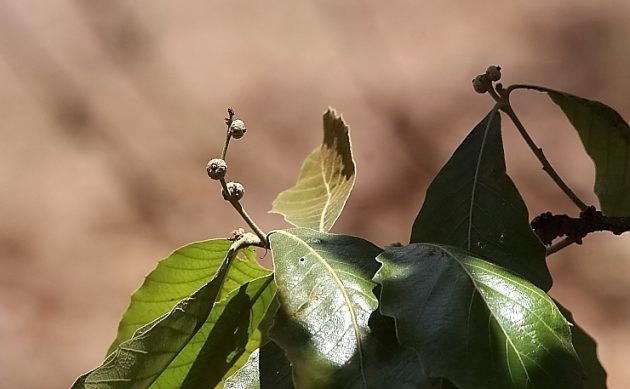
There will probably be!
[adinserter block=”1″]
Source link

